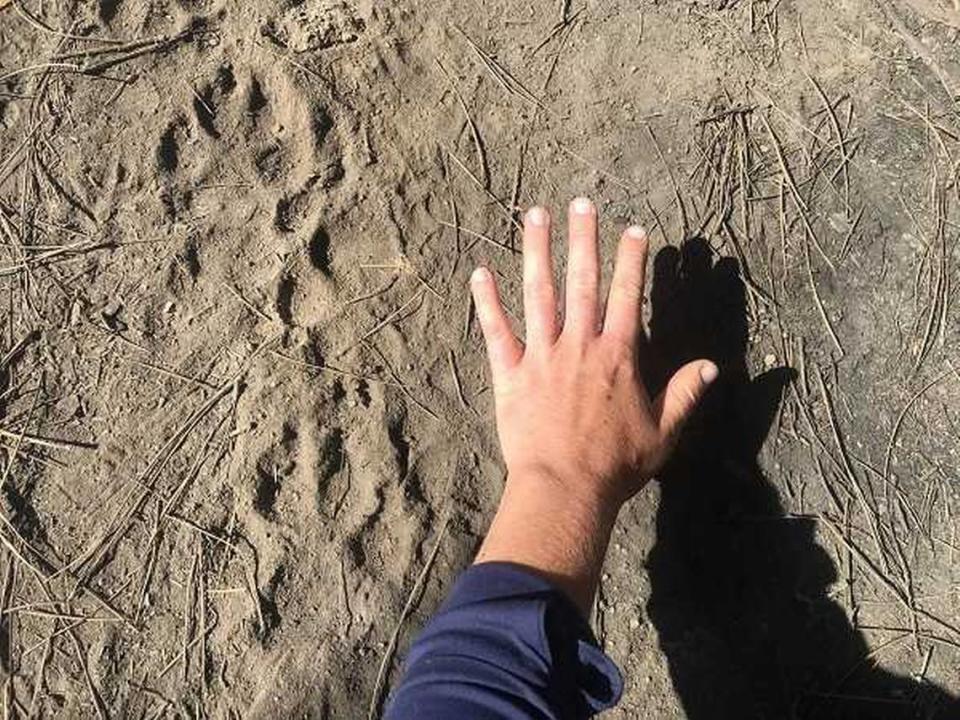There’s a new wolf pack in California. Here’s where wildlife officials found it
There is a new pack of wolves in California.
It’s in the Sequoia National Forest near Tulare County.
The state’s Department of Fish and Wildlife first received a report of a wolf sighting in the forest on July 6. Upon investigation, state officials found tracks and other signs that there were indeed wolves in the area.
On Friday, the department confirmed it as a pack of gray wolves.
This is the farthest south a wolf pack has been seen in the state — at least 200 miles from the nearest known packs, all in Northern California.
The sighting in July was captured on video by Michelle Harris and Samantha Winiecki-Love of Colibri Ecological Consulting, which has been working in the area since 2022 to restore sequoia groves damaged by wildfires.
“As Sam and I were driving into our site, a large canid ran off the Forest Service road ahead of us,” Harris wrote in an Instagram post after state officials announced the news. “She paused, and started to pace and make these vocalizations. All we could think was, ‘she doesn’t look like a coyote but she has to be, right?’
“She sure didn’t behave like a coyote either. I managed to get some photos through my binoculars before we parted ways. ... We only drove a little further before continuing towards our survey location on foot. That’s when we noticed the tracks. Largest canid tracks we’ve ever seen!”

Harris said she and colleagues had trekked back to the area several times as part of their survey work, finding scat samples and paw prints on fire roads that they passed on to wildlife officials.
“I’m still in awe,” she wrote. “We’ve continued to find tracks in the area, as I’ve been working here weekly.”
Genetic analysis of a dozen hair and scat samples were able to determine the sex, coat color, individual identity, relation to one another and pack origin of each wolf, the department said in a release.
“The new pack consists of at least five individuals not previously detected in California, including one adult female, who is a direct descendant of California’s first documented wolf in the state in recent history, (OR-7).”
In 2011, the radio-collared OR-7 traveled close to 1,000 miles across Oregon and into California. It was the first confirmed wolf seen in the state since 1924 and led to the creation of California’s wolf conservation and management plan.
Her descendant is traveling with four offspring, the department said, two females and two males.
None of the samples came from an adult male, according to officials, but the offspring were bred from a descendant of the Lassen Pack, which has been broadly reported in an area of western Lassen and northernmost Plumas counties.
Currently, there are three confirmed wolf packs in California, including the Lassen Pack.
The Whaleback Pack has been reported in Siskiyou County and the Beckwourth Pack is in Plumas and Sierra counties.
The so-called Shasta Pack had been regularly detected in 2015 and had several of its wolf pups caught on camera footage. But that pack has since vanished.
Of course, individual wolves have made it down into the central San Joaquin Valley before. Several people reported seeing a gray wolf wandering around Huntington Lake in 2020, though it was not confirmed.
In 2021, a tagged wolf known as OR-93 was spotted in the rural aglands of Fresno Country. The department of Fish and Wildlife tracked the animal’s movement for weeks as it moved through Mono County, then Tuolumne, Mariposa, Merced and Madera counties and then Fresno County.
That wolf, a male, traveled as far south as Ventura County before it was struck and killed on a frontage road parallel to Interstate 5 in Kern County.
The Sacramento Bee’s Daniel Hunt contributed to this story.

